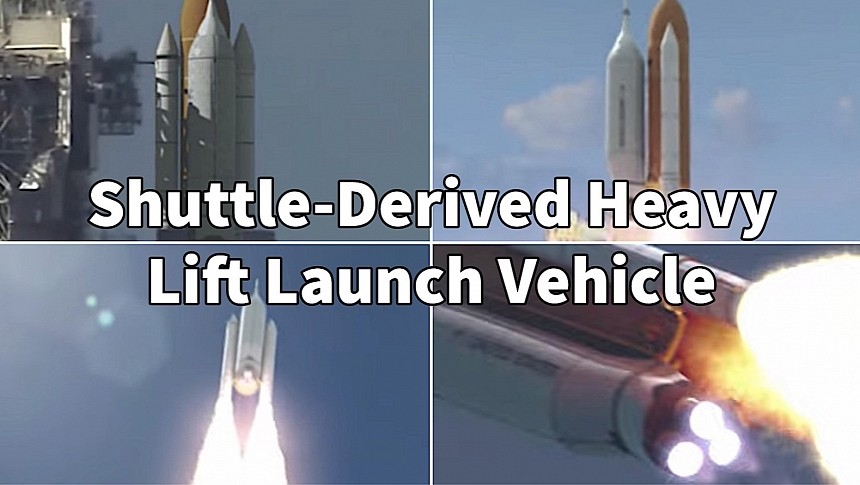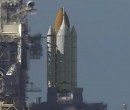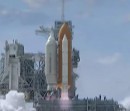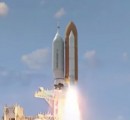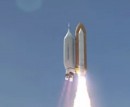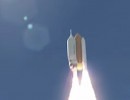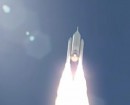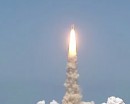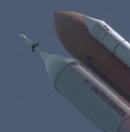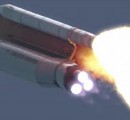The talk of the week (and the coming ones as well) in space exploration is undoubtedly the successfully failed launch of the SpaceX Starship. Supposed to reach orbit for the first time, the machine that was eventually to spawn Moon- and Mars-bound spaceships “experienced a rapid unscheduled disassembly before stage separation” and ended, for now, the company’s dreams of sending this vehicle to actual space.
This kind of failure is not something unheard of in space exploration. In fact, some would say it’s even something to be desired, as this is the only way we can learn if something is dangerous before letting humans use it.
Rocket failures such as this are also proof that an idea is worthy enough to have made it into the real world and enter testing. Just so you know, for every rocket that explodes on the launch pad or in the air there are countless concepts that never made it into the real world.
We’ve seen a number of these ideas being brought to life in the digital world by various specialists. They are here just to give us a taste of how the world might have looked had these machines cleared the hurdles preventing them from making it on the big space exploration stage.
Most of these unrealized ideas for rockets and spaceships come from the early years of America’s space exploration program. Not the rocket we’re here to look at now, something that in some respects looks even more spectacular than the SpaceX Starship, or perhaps even than the Space Launch System that will soon take humans back to the Moon.
It’s called the Shuttle-Derived Heavy Lift Launch Vehicle (HLV), and it was submitted for NASA analysis back in 2009. It was supposed to use the lessons learned with the Shuttle program to develop a vehicle for crew and cargo transport to the International Space Station (ISS), but also onward to the Moon.
The HLV was to use the most of the space Shuttle’s hardware, starting with the solid rocket boosters that delivered a combined 5,900,000 pounds-force of thrust. Instead of the Shuttle itself being strapped to these boosters, a side-mounted payload carrier was to be used – the only piece of hardware not taken from the then-in-use space Shuttle. In between the boosters, there was, of course, the massive fuel tank of the rocket.
For reasons that no longer matter in the grand scheme of things (including, or more specifically, cost, and the ending of the Shuttle program), the HLV never got to be made and flown. Yet we can get a glimpse of the thing in action thanks to the YouTube Shorts video put together by animation specialist Hazegrayart. You can have a look at it below, and be amazed at yet another space vehicle idea that never came to be.
Rocket failures such as this are also proof that an idea is worthy enough to have made it into the real world and enter testing. Just so you know, for every rocket that explodes on the launch pad or in the air there are countless concepts that never made it into the real world.
We’ve seen a number of these ideas being brought to life in the digital world by various specialists. They are here just to give us a taste of how the world might have looked had these machines cleared the hurdles preventing them from making it on the big space exploration stage.
Most of these unrealized ideas for rockets and spaceships come from the early years of America’s space exploration program. Not the rocket we’re here to look at now, something that in some respects looks even more spectacular than the SpaceX Starship, or perhaps even than the Space Launch System that will soon take humans back to the Moon.
It’s called the Shuttle-Derived Heavy Lift Launch Vehicle (HLV), and it was submitted for NASA analysis back in 2009. It was supposed to use the lessons learned with the Shuttle program to develop a vehicle for crew and cargo transport to the International Space Station (ISS), but also onward to the Moon.
The HLV was to use the most of the space Shuttle’s hardware, starting with the solid rocket boosters that delivered a combined 5,900,000 pounds-force of thrust. Instead of the Shuttle itself being strapped to these boosters, a side-mounted payload carrier was to be used – the only piece of hardware not taken from the then-in-use space Shuttle. In between the boosters, there was, of course, the massive fuel tank of the rocket.
For reasons that no longer matter in the grand scheme of things (including, or more specifically, cost, and the ending of the Shuttle program), the HLV never got to be made and flown. Yet we can get a glimpse of the thing in action thanks to the YouTube Shorts video put together by animation specialist Hazegrayart. You can have a look at it below, and be amazed at yet another space vehicle idea that never came to be.
